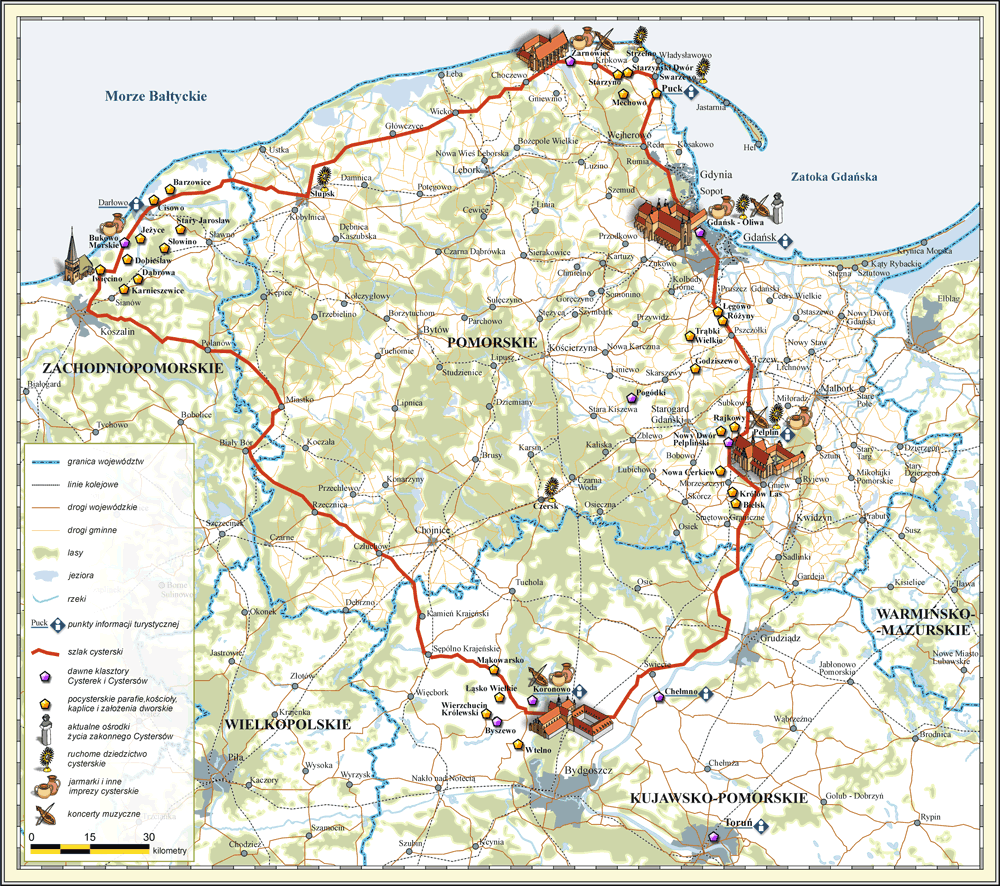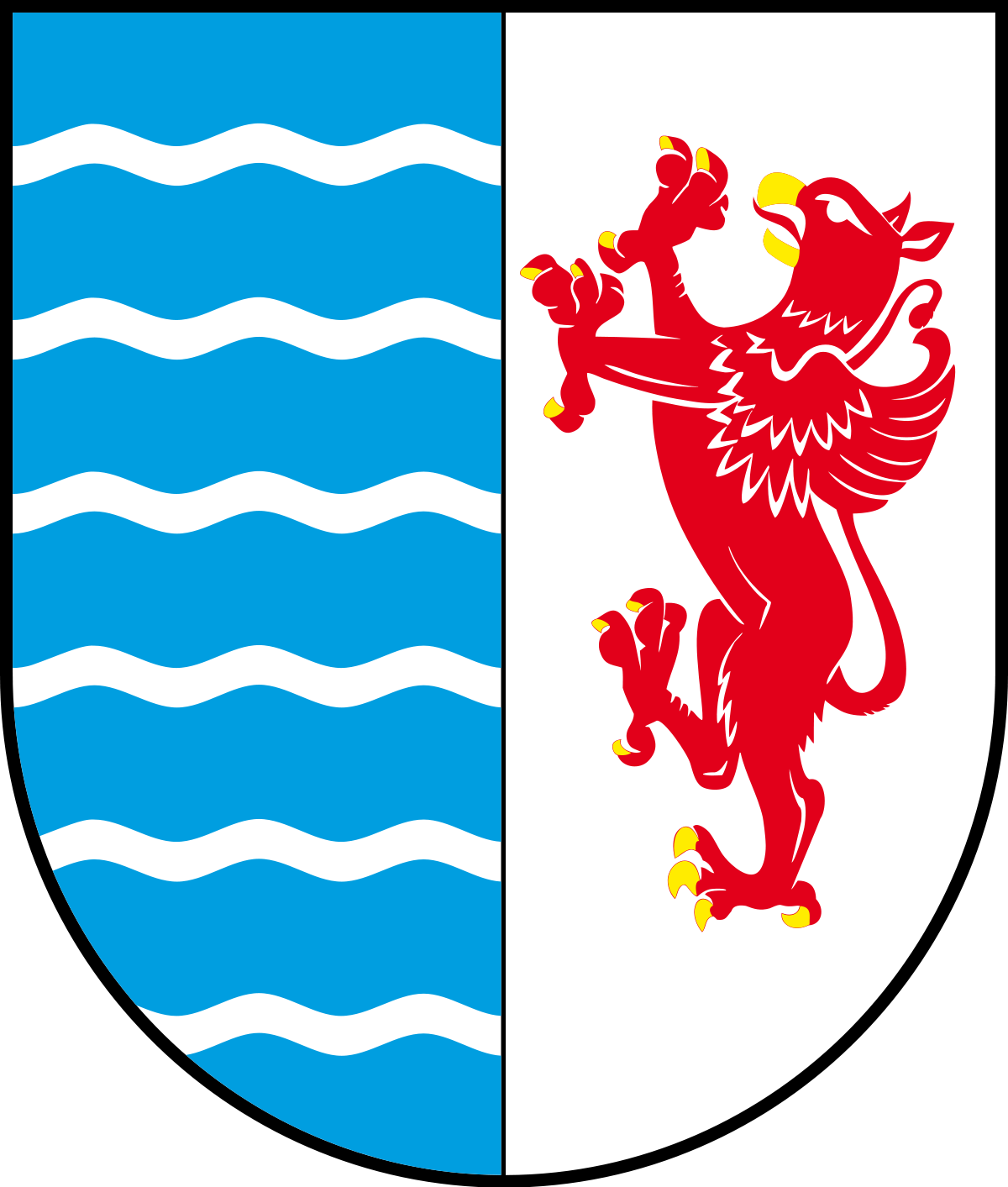The first Cistercian monks from Western Europe arrived on Polish soil relatively quickly, as early as 1240s, initially reaching Greater Poland (Łekno) and Lesser Poland (Jędrzejów). The beginnings of the Cistercians in Polish lands occurred in the period of the most dynamic development of the Order in Europe, which covered the years 1140 – 1153, i.e. the period of the pontificate of Eugene II and the Times of Bernard of Clairvaux.
After the first foundations, the Order quickly spread to other districts of politically fragmented Poland, also covering the areas of Eastern Pomerania and Kuyavia.
In the area of our interest, the Pomeranian Loop of the Cistercian Trail, the Cistercians settled the earlies at Oliwa (1178-1186) in the valley of the Oliwa Brook, through the foundation by the family of the East Pomeranian dukes and the monks of the Kołbacz monastery (with monks from Danish convent from Esrom). To Bukowo Morskie the Grey Monks were invited from Draguń in Mecklenburg by the duke of Danzig, Świętopełek II. The exact date of their arrival remains unknown, but the first bestowal dates 1248-1253.
Mikołaj Zbrożek, treasurer of Duke Kazimierz of Kuyavia, was the founder of another abbey, located in the east of the Krajeńskie Lake District, in Byszewo, to which the first Cistercians (most probably from Sulejów and Lubiąż) were said to have arrived in 1256. Grey Monks moved to Koronowo after 1288, where they settled on the right bank of the Brda River.
Sambor I, Duke of Tczew, endowed the Cistercians with land on the upper bank of the Wierzyca River, near the early medieval stronghold in Pogódki, where the monks, who came from Doberan in Mecklenburg, had been residing since 1258. In 1276, after the granting by Mściwój, they relocated from Pogódki to Pelplin. Here the Cistercians settled in the valley on the left bank of the lower Wierzyca River.
Between 1245 and 1267, the foundation of the female line took place thanks to the Cistercians of Oliwa. In their lakeside estate in Żarnowiec, an organisationally and economically dependent monastery of the monastic obedience, the only one in Pomerania, was founded.
The places of settlement of the Cistercian episcopal obediences were Chełmno and Toruń. In 1266 Bretold of Czyste and his wife Krystyna bequeathed their movable and non-movable property to the Cistercians of Chełmno, retaining the right to use the property until death. This grant was confirmed by the Bishop of Chełm, Werner, in 1285.
The Cistercian nuns of Toruń were most probably brought there by the Grand Master of the Teutonic Order, Hanno von Sangershausen in 1263, In 1341, Grand Master Dietrich von Altenburg granted the Cistercians the right of patronage over St James’ Church, the rectory and the church school.








